Whether you’re battling wrinkles, oil, or acne, chances are you have everything you need to make one of these apple cider vinegar face masks to remove dead skin and restore your skin’s glow. Since everyone’s skin is different, we’ve got masks for just about every skin type.
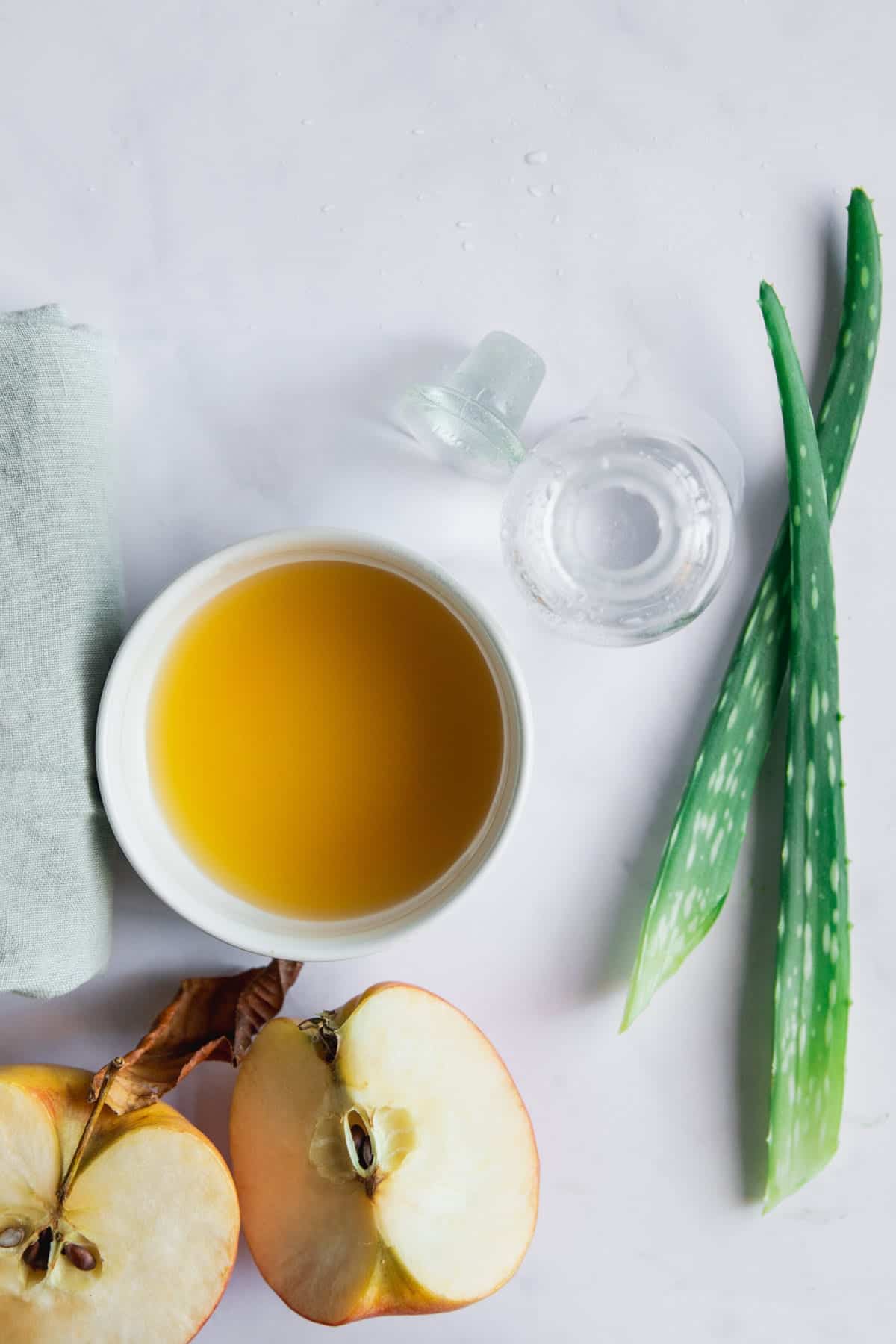
Apple cider vinegar (ACV) is one of those natural ingredients that, like coconut oil, works for just about anything. With a bazillion different uses, it’s no surprise that ACV has beneficial effects on your skin. Making a skin-soothing face mask is easy with this inexpensive and widely available multi-tasking ingredient.
Jump to:
- Apple Cider Vinegar Skin Benefits
- How To Make an Apple Cider Vinegar Mask at Home
- 1. Super Easy Apple Cider Vinegar Peel
- 2. ACV and Oatmeal Treatment for Normal Skin
- 3. Honey Apple Cider Vinegar Mask for Dry Skin
- 4. Apple Cider Vinegar Face Mask for Oily Skin
- 5. Apple Cider Vinegar Face Mask for Mature Skin
- 6. Apple Cider Vinegar Face Mask for Acne-Prone Skin
- Other Ways to Use ACV for Skin and Hair
- FAQ
- References
Apple Cider Vinegar Skin Benefits
Stick with organic, raw apple cider vinegar for at-home skin treatments. ACV is just raw apple juice fermented with yeast and bacteria. The fermentation process produces beneficial compounds, nutrients, and probiotics, which give ACV its medicinal benefits.
But only the raw, unpasteurized form of this vinegar has the so-called magical properties. While pasteurized ACV still contains acid, which makes it great for at-home skin peels, it doesn’t contain the probiotic bacteria and enzymes you need to kick acne to the curb and nourish your skin.
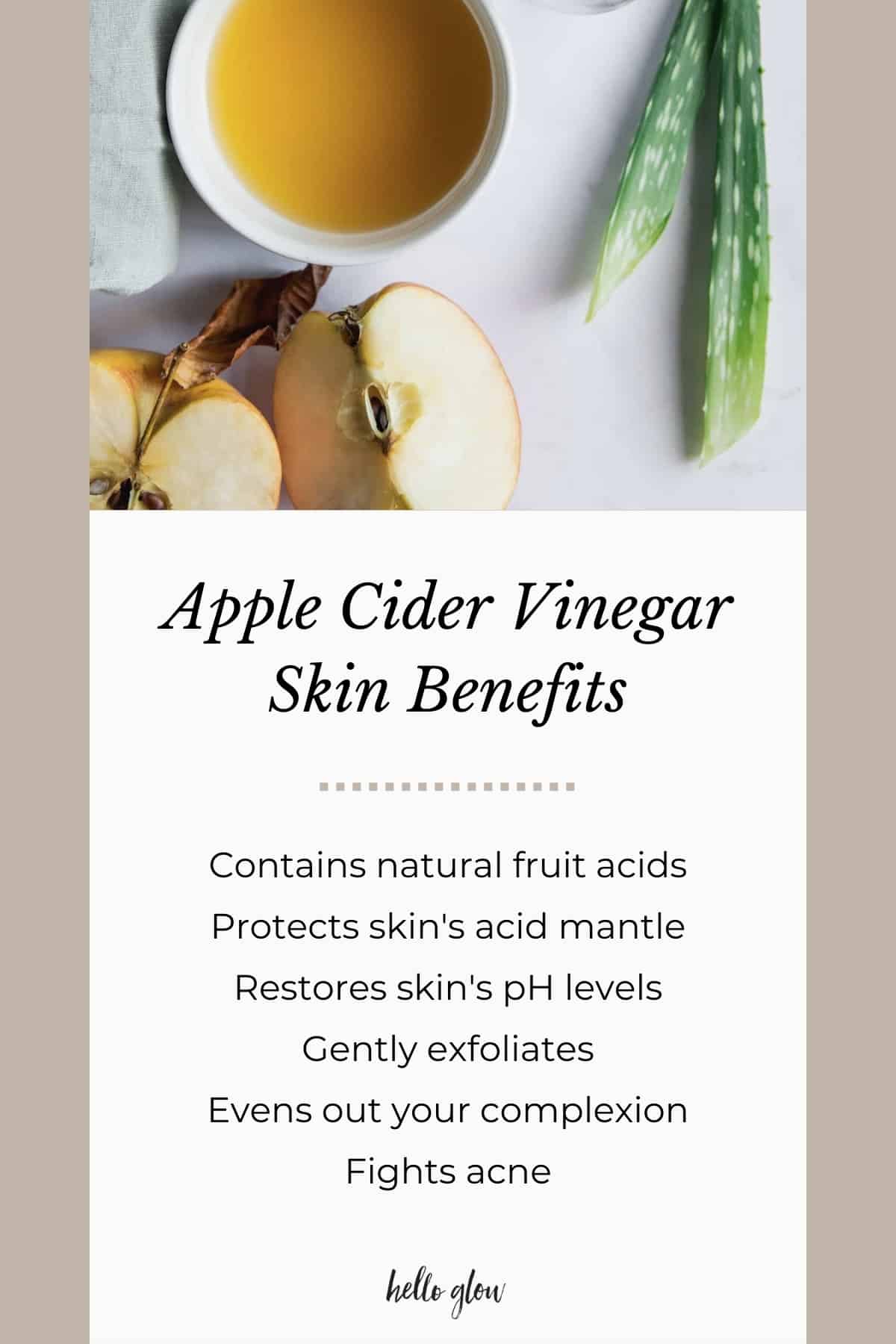
1. Contains natural fruit acids
When it comes to DIY skin masks, apple cider vinegar is a star—thanks to its high acid content. Acetic acid is the one we hear about most often [source], but ACV is also chock full of lactic, citric, and malic acids as well.
The natural alpha-hydroxy acids in vinegar provide several skin benefits, including gently exfoliating dead skin cells, decreasing inflammation, and boosting cell turnover [source]. This is why it’s so great for acne and brightening skin [source].
2. Protects skin’s acid mantle
Unlike harsh store-bought chemical peels, ACV’s natural acids are said to help improve your skin’s texture while supporting its protective layer.
Repeated use of harsh creams and cleansers disrupts the skin’s barrier function and its delicate acid mantle, both of which protect the skin from germs, bacteria, yeast, and pollution.
3. Restores skin’s pH levels
One of the things that makes apple cider vinegar so great is that it can help restore the skin’s pH balance, which repairs its natural defenses. Plus, applying ACV to your face delivers beneficial vitamins, mineral salts, and amino acids deeper into the skin.
4. Gently exfoliates
Apples are a naturally potent source of malic acid, which smooths the skin but is gentle and unlikely to irritate. Combining apple cider vinegar with organic applesauce ups the dose of gentle, natural alpha-hydroxy acids that clear away dead skin cells. It also gives your peel a thicker consistency, which helps it to coat the skin and allows the acid compounds to sink in more slowly.
5. Evens out your complexion
Combining apple cider vinegar with apples helps kill bacteria, removes excess dirt, oil, and makeup, and gently exfoliates by dissolving dead skin cells. A facial peel containing these acids is particularly helpful for evening out your complexion, especially if you have age spots or other visible effects of sun damage.
6. Fights acne
Apple cider vinegar is rich in malic acid, which is a natural exfoliant. Gentle exfoliation encourages cell turnover and sloughs away dead skin cells, dirt, and oil that are clogging your pores. Not to mention, ACV is loaded with good bacteria that help calm inflammation and soothe acne-prone skin [source].
I’ve used ACV for years to aid in keeping my hormonal breakouts at bay. But others say that it only makes their acne worse. So, how well it works for you depends on your skin type.
How To Make an Apple Cider Vinegar Mask at Home

Always use organic, raw, unfiltered apple cider vinegar.
If you have sensitive skin or notice a lot of redness and irritation following a peel, it’s best to make your mask a little weaker. To do that, dilute the ACV by adding an equal amount of tap water, filtered water, or even rose water to reduce the acidity, making it less likely to cause skin irritation.
Apply the mask to your face, neck, and chest with clean fingers, but avoid the eye area and any irritated areas that would sting.
Leave the mask on for about 10 minutes. If you feel a burning sensation, rinse the mask sooner. And if you still feel stinging after diluting the ACV, it might be best to dilute more or use a gentler product for your peel.
Don’t expect to see results overnight. A full skin-cell turnover takes about 4 to 6 weeks, so give it at least that much time for the benefits to take place.
1. Super Easy Apple Cider Vinegar Peel
I recommend doing a DIY acid peel at night or before a shower, as the pungent vinegar scent tends to linger!
Ingredients
- 1 tablespoon organic, raw, unfiltered apple cider vinegar
- Juice of ½ lemon (optional)
Instructions
- Pour the apple cider vinegar into a bowl or small cup, and if you are treating pigmentation or sun spots, you can add a squeeze of half a lemon. If you have more sensitive skin, just skip the lemon juice.
- Dip a cotton round in the apple cider vinegar, and then gently swab over your face in circular motions. Avoid the eye area.
- Tingling sensations are to be expected. However, if you feel burning, you can dilute the apple cider vinegar with water.
- If the tingling or burning sensation does not subside with cooling and frequent skin moisturization, it is recommended that you contact your dermatologist.
- Leave the peel on for 5 minutes and then rinse off with warm water. Using this vinegar peel a few times a month will help slough dead skin cells, encouraging the formation of new skin. Its exfoliating effects will also help with the absorption of serums and moisturizers.
2. ACV and Oatmeal Treatment for Normal Skin

This mask aims to balance the skin’s pH and improve texture. Dilute the ACV with kombucha, which adds more probiotics and gentle acidity, and add oatmeal powder to soothe the skin and provide mild exfoliation.
Ingredients
- 1 teaspoon organic, raw, unfiltered apple cider vinegar
- 2 tablespoon kombucha
- 1 tablespoon oatmeal powder
Instructions
- Mix the ACV with kombucha and oatmeal powder to form a paste. Apply to the face and leave it for 10 minutes, then rinse with warm water.
- Remember to do a patch test on a small area of your skin before trying any new mask, especially if you have sensitive skin, to ensure you don't have an adverse reaction to any ingredients.
3. Honey Apple Cider Vinegar Mask for Dry Skin
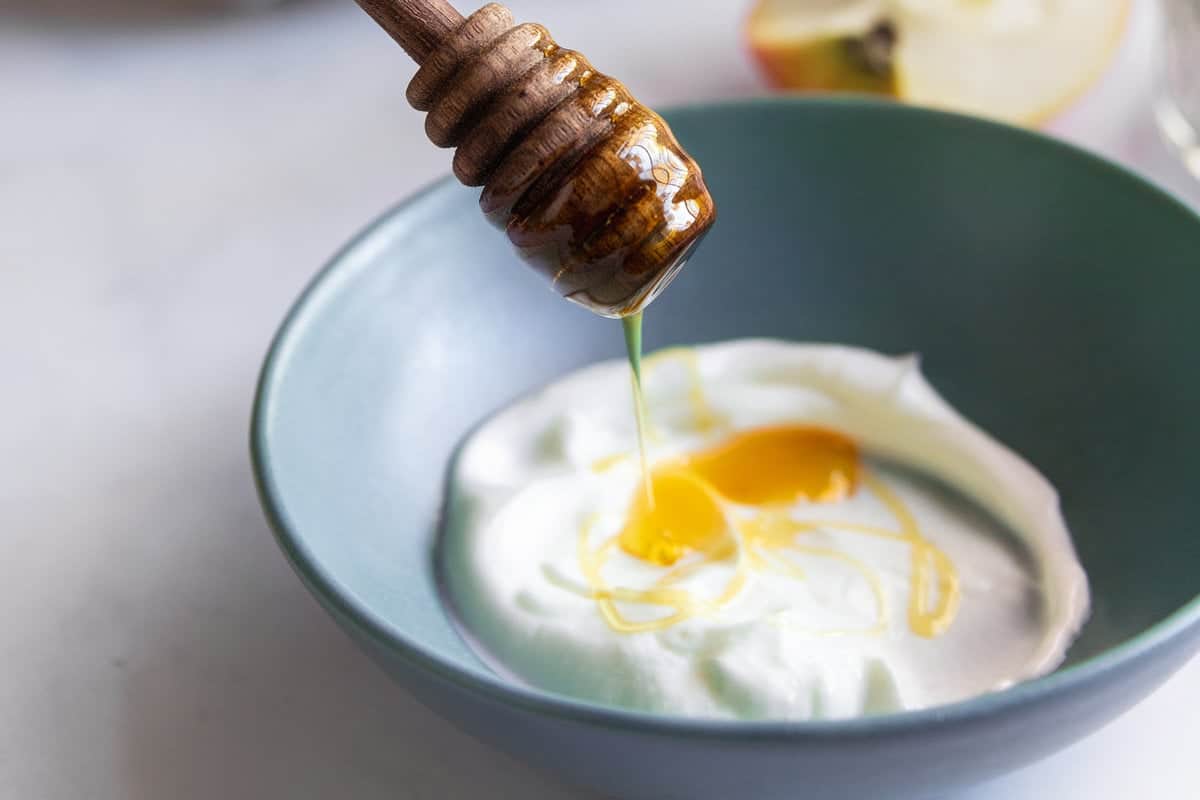
This mask uses apple cider vinegar to gently exfoliate, while honey and yogurt work to replenish moisture and soothe redness. Aloe vera leaves skin feeling refreshed, revitalized, and incredibly soft.
Ingredients
- 1 tablespoon raw, organic apple cider vinegar
- 2 tablespoon plain yogurt
- 1 teaspoon honey
- 1 teaspoon aloe vera gel
Instructions
- Mix all the ingredients thoroughly to form a smooth paste. Apply the mixture to your face, avoiding the eye area.
- Leave on for 5-10 minutes. Rinse off with lukewarm water and follow with a moisturizer suitable for dry skin.
4. Apple Cider Vinegar Face Mask for Oily Skin

Who says you can’t turn a regular ol’ clay mask into a refreshing skin peel? ACV boosts skin cell turnover, while bentonite clay absorbs pore-clogging debris, and tea tree oil fights bacteria that contribute to acne.
Ingredients
- 1 tablespoon raw, organic apple cider vinegar
- 1 tablespoon water
- 1 teaspoon bentonite clay
- 2 drops tea tree essential oil
Instructions
- Combine all the ingredients to create a paste with a spreadable consistency. Apply the mixture to your face, avoiding the eye area.
- Leave the mask on for 10 minutes. Rinse it off with cool water and follow with an oil-free moisturizer.
5. Apple Cider Vinegar Face Mask for Mature Skin
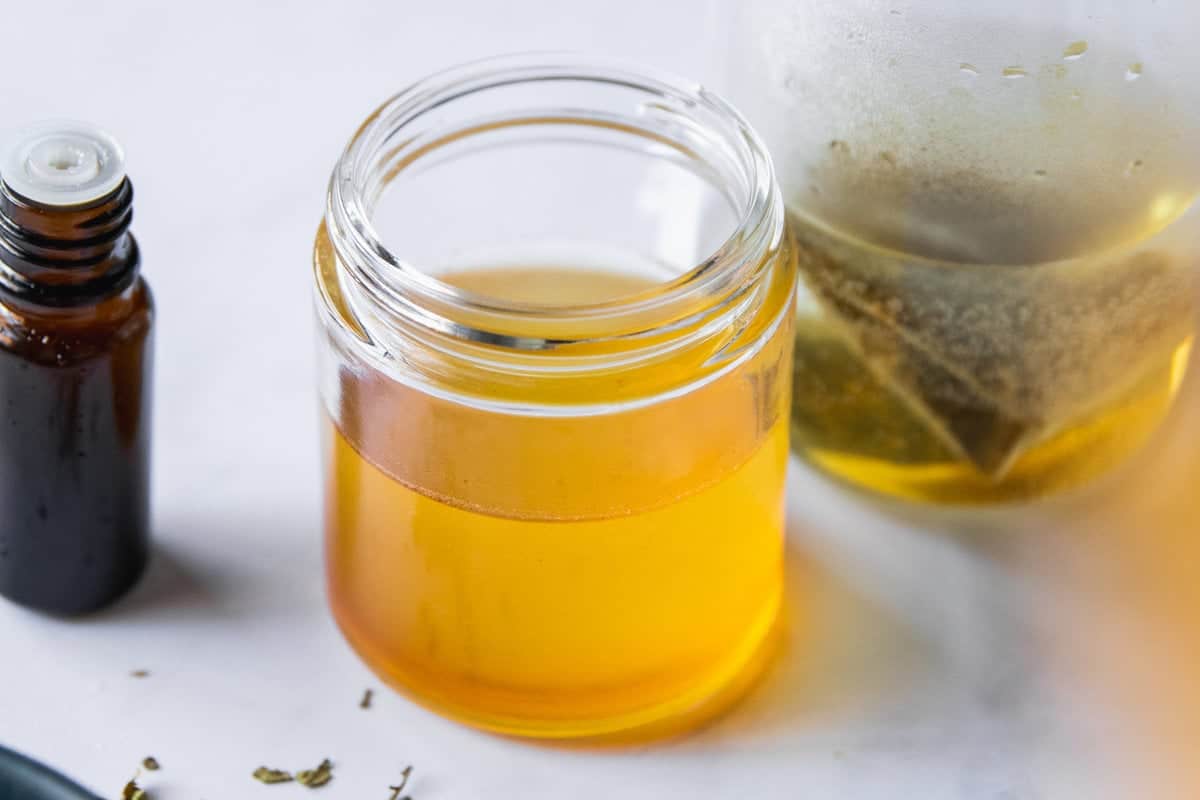
Mature skin needs a little more moisture and nourishment than younger skin. With the help of antioxidant-rich green tea, moisturizing rosehip oil, and nourishing honey, this ACV mask covers all the bases.
Ingredients:
- 1 tablespoon raw, organic apple cider vinegar
- 1 tablespoon brewed organic green tea, cooled
- 1 teaspoon raw, organic honey
- A few drops of organic rosehip oil
Instructions:
- Mix the ingredients until well combined. Apply the mixture to your face, avoiding the eye area.
- Leave the mask on for 10–15 minutes. Rinse it off with lukewarm water and follow with a rich, antiaging moisturizer.
6. Apple Cider Vinegar Face Mask for Acne-Prone Skin
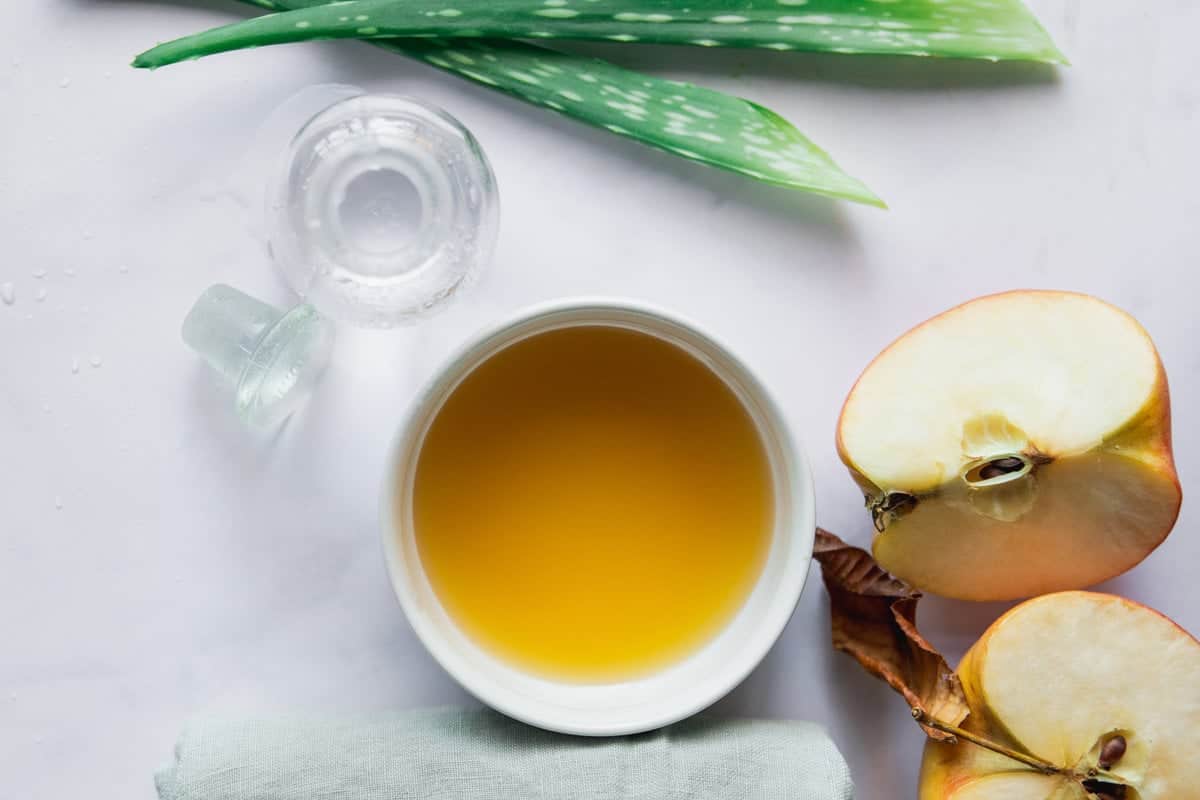
This ACV face mask offers a targeted solution for healthier-looking skin, thanks to vinegar, the soothing qualities of aloe vera gel, and the astringent action of witch hazel. Just apply it to acne-prone areas with a cotton ball, let it sink in, and then rinse it off for smooth, clear skin.
Ingredients:
- 1 tablespoon raw, organic apple cider vinegar
- 1 tablespoon water
- 1 teaspoon aloe vera gel
- 1 teaspoon alcohol-free witch hazel
Instructions:
- Combine the ingredients to create a thin, liquid mixture. Apply the solution to your face using a cotton pad, avoiding the eye area.
- Leave the mask on for 10–15 minutes. Rinse it off with cool water and follow with a noncomedogenic moisturizer.
Other Ways to Use ACV for Skin and Hair
Did I mention that apple cider vinegar does it all? Here are a few of our favorite ways to incorporate it into your beauty routine and reap the benefits all year long.
And if you’re feeling adventurous, here’s how to make apple cider vinegar. It’s fun—trust me!
- Clarifying ACV scalp scrub
- Scalp-cleansing ACV shampoo
- Herb-infused ACV hair rinse for healthy, shiny hair
- Tea tree and ACV acne face mask
- Vinegar + rice water hair rinse for stronger hair
FAQ
It’s recommended to start with once a week and adjust based on your skin’s response. Overuse may lead to dryness or irritation.
If you have sensitive skin or notice a lot of redness and irritation following a peel, it’s best to make your mask a little weaker. To do that, dilute the ACV by adding an equal amount of tap water, filtered water, or even rose water to reduce the acidity, making it less likely to cause skin irritation. Then, apply the mask as usual. If you still feel a strong burning sensation, it might be best to skip the ACV mask altogether and use a gentler peel.
Individuals with sensitive or irritated skin should exercise caution. Start with a patch test and consider further dilution or consult with a dermatologist.
Yes, moisturizing after the mask helps to rehydrate and soothe the skin. Choose a noncomedogenic moisturizer suitable for your skin type.
References
References
Elhage, KG, et al. Acetic acid and the skin: a review of vinegar in dermatology. Int J Dermatol. 2022.
Tang SC, et al. Dual effects of alpha-hydroxy acids on the skin. Molecules. 2018.
Gaurav V, et al. Home remedies in dermatology. Indian Dermatol Online J. 2023.Kober MM, et al. The effect of probiotics on immune regulation, acne, and photoaging. Int J Womens Dermatol. 2015.

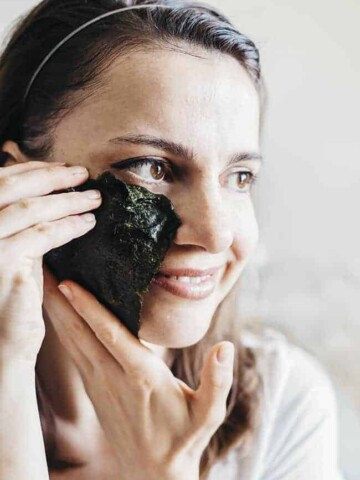
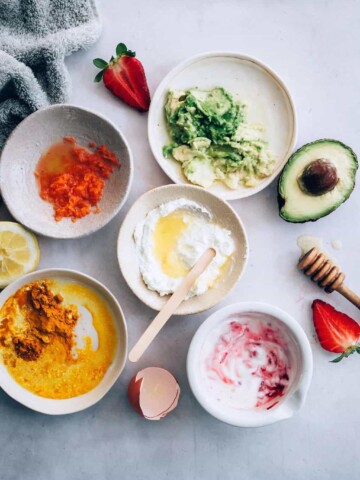


Leave a Comment